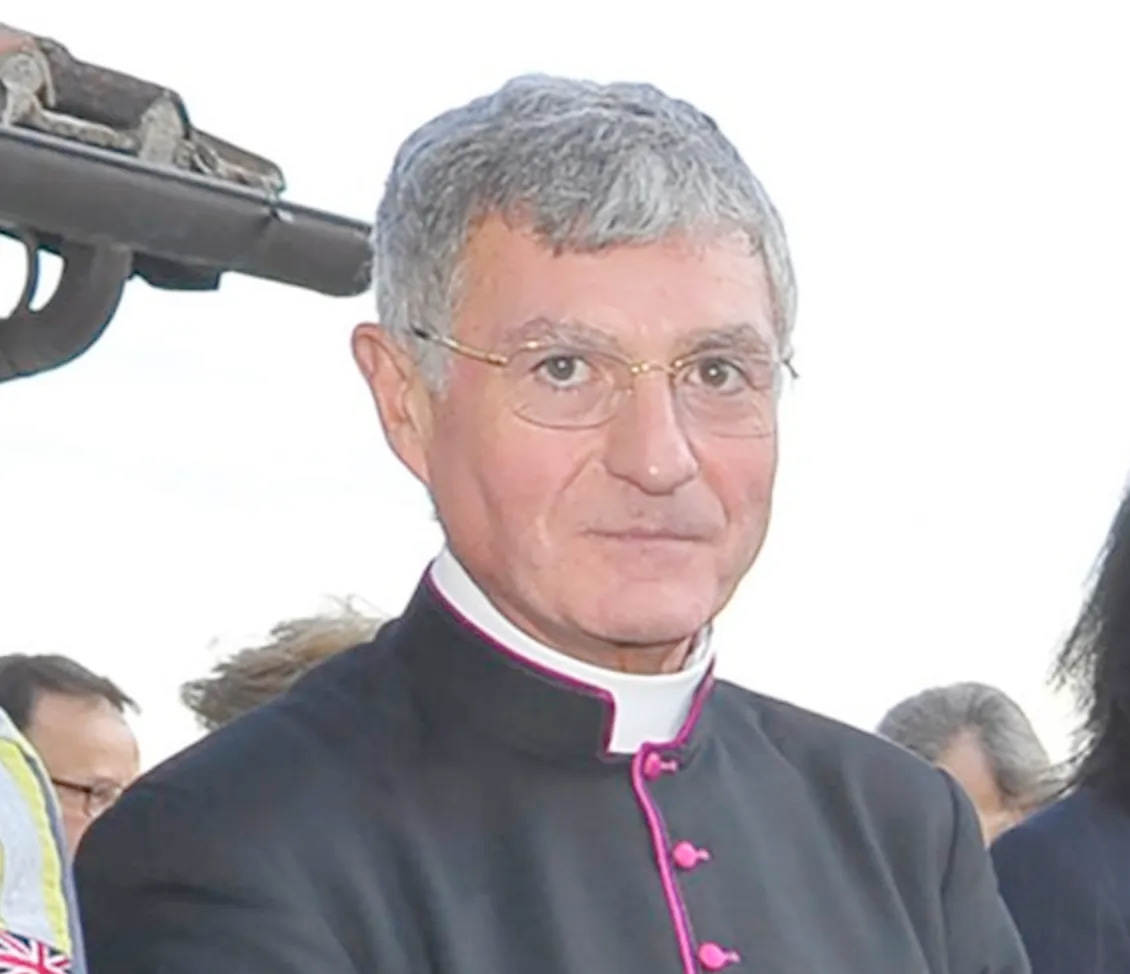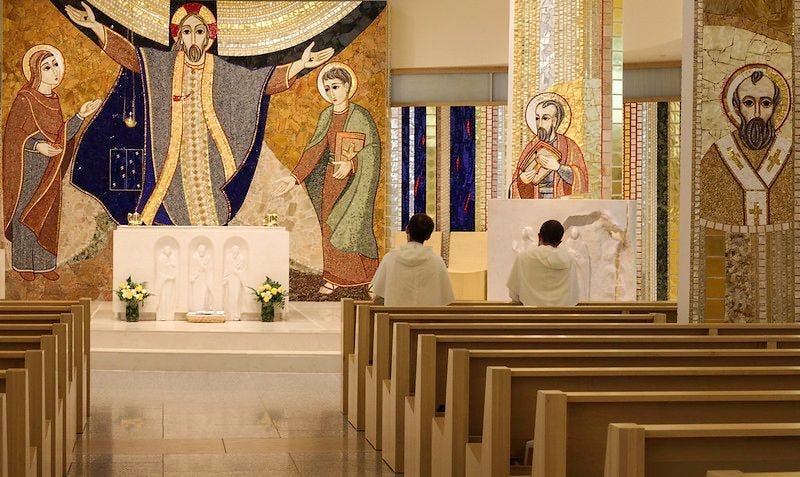After the Vatican’s approval of new norms for seminary formation, U.S. vocations directors and seminary rectors have already begun the difficult job of adapting to a new paradigm, which thinks in stages of Christian discipleship, and includes new timetables and elements on the path to priestly ordination.
The new, sixth edition of the Program of Priestly Formation introduces a raft of changes for seminary life, with the most dramatic shifts coming at the very beginning and end of clerical training. These new stages present a host of practical and spiritual challenges, which could accelerate reform in some institutions, and hasten the closure of others.
The addition of an initial “propaedeutic” stage — focused mostly on prayer — was at the center of attention while the sixth edition of the U.S. bishops’ Program of Priestly Formation was under development.
But while that stage will have significant impact on priestly formation in the United States, so will a final period, the “vocational synthesis stage,” which will take place between diaconal and priestly ordination. In fact, some formators say they have more concerns about the implementation of that “synthesis” aspect of formation than they do about wholesale introduction of the initial propaedeutic year.
To be sure, the propaedeutic stage has gotten the lion’s share of attention for good reason. The new PPF requires that, before they begin their philosophy studies, seminarians spend an entire calendar year in a new stage of formation — dedicated to prayer, to developing an appropriate filial relationship with the diocesan bishop, and to growing in Christian discipleship.
The propaedeutic stage is not meant to coincide with philosophy, or even to take place in the same living facilities as seminarians further down the path. It is instead meant to be something like a novitiate for diocesan priesthood, in which seminarians are set apart in a contemplative life of ora et labora — prayer and work — as they discern their vocations and better learn to hear the voice of God. Some existing propaedeutic programs include a technology fast, meant to aid “detox” from the social media/dopamine feedback loop — no doubt a great gift for any person living in the contemporary West.
But facilitating the propaedeutic stage at seminaries across the country will require an influx of manpower — priests assigned as formators for newly accepted seminarians, in addition to the renovation of seminary properties, and the resolution of some logistical challenges for seminarians coming to the United States with student visas.
It will not, in short, be easy to launch the propaedeutic stage: it will be costly, and, if they can’t make a good propaedeutic program happen, the requirement may well hasten the closure of at least a few seminaries already teetering on the edge of fiscal sustainability.
The stage is meant to address the quality of men in seminary formation — to equip aspirants to the priesthood with a period of both human and spiritual formation that will make some of them better seminarians, and give formators a good chance to show some of them the door.
It is not clear if the requirement will have an effect on the quantity of seminarians. While an additional year on the path to priesthood could be a deterrent for some would-be seminarians, the notion of a year focused on learning better to pray might indeed be attractive to some candidates — and probably to those most suited for priesthood in the first place.
In either case, while launching the propaedeutic stage will prove difficult for some seminaries, it does not seem likely to pose an ongoing source of difficulty for formators or administrators, save for the perennial problems of money and manpower. The stage is institutional, which seminaries are already used to, and basically an adaptation of the existing seminary process.
But the “vocational synthesis stage” represents a different kind of challenge.
The “vocational synthesis” period is intended to take place after diaconal ordination, which, in the new schema for priestly formation, is itself supposed to occur after all studies have been completed. The stage is meant to be a period of at least six months, in which deacons live and work in a parish in the diocese of their incardination, getting used to the day-to-day experience of parochial life and ministry.
The stage is not meant to add a new evaluation — the new PPF says twice that the stage is “intended primarily as a time not of evaluation, but of integration and transition.”
Nevertheless, there is a final judgment of all transitional deacons before they’re ordained to priesthood, and the assessment of the pastor who oversees a man during the vocational synthesis stage will, no doubt, factor into that equation.
Since that pastor is to be a kind of final formator for a transitional deacon, and since his evaluation will no doubt count for something, bishops will have to be especially attentive to the kind of men they entrust with this responsibility. A priest can be a very good pastor, and not especially good as a formator, of course.
And in the inevitable difficulties that come with adjustment to rectory living, pastors will have to be careful to distinguish between personality conflicts and “formation issues” — and bishops will have to weigh evaluations with that in mind.
It seems almost certain that bishops, or vicars for clergy, will find themselves having to make a new and difficult set of discernments if the placement of a deacon in his vocational synthesis parish simply doesn’t fit — and if the reason for that is not especially clear.
Bishops will also need to be especially attentive to the kind of liturgical formation taking place during the vocational synthesis stage — since most practical liturgical ministry experience will take place outside of the seminary, bishops will need to ensure that the pastors they pick as good formators also possess the kind of ars celebrandi they want passed on to their transitional deacons.
Deacons, for their part, will need to be receptive to the lessons of those pastors, and be willing to extend trust in a process in which the kinks are still being worked out.
Those challenges, of course, will probably play themselves out in some interesting ways in the years to come, when the practical implications of a new way of doing things become more manifest.
But done right, the challenges of the vocational synthesis stage also represent opportunities — The invitation for pastors to take a more active role in formation could lead to better mentoring relationships between senior priests and the newly ordained assigned to them. And those kinds of relationships could lead to more cohesive fraternity among diocesan priests.
Especially if new priests are assigned to the parish in which they completed the vocational synthesis stage, the opportunity for an ongoing mentoring relationship should not be overlooked — nor should the value of a parish community deeply invested in the success of the priest they saw grow from the early stages of his diaconate into his priestly identity.
There are, of course, practical issues and particular cases which will need to be addressed. It is not clear, for example, how the North American College, which usually sees men continue in studies after priestly ordination, will adapt to accommodate the new stage. And the relationship between religious communities and the PPF is always a complicated conversation.
But the new stages of priestly formation aim, according to the text, to form “shepherds ‘with the smell of the sheep,’ who live in their midst to bring the mercy of God to them.”
It will be up to diocesan bishops to see how well that really can be done.



